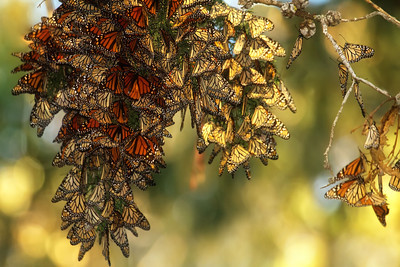Invertebrate Migration
Even insects and other invertebrates migrate! Most die in winter or hibernate to avoid the cold winter temperatures, but some migrate instead. Termites and earthworms migrate byburying themselves deeper into the soil in the cold winter months to avoid getting frozen.
The most famous invertebrate migration is that of the Monarch Butterfly. As autumn approaches, the butterflies begin to gather in clusters in their thousands throughout North America. They then fly south to the warm forests of Mexico – a journey of more than 1600km – returning north again the following spring. They rest in trees along the way – using the very same trees every year.
However, the strange thing is that the return journey takes longer than the butterflies’ life-span, so the butterflies that fly home are different to the ones that flew out! Each migrating butterfly will never make the trip again. In fact 2 or 3 generations have been and gone before the return journey is made! The offspring follow exactly the same route and roost in the same trees as their great grandparents on the way over. We have no idea how they know to do this. The reason they make the journey is probably because it is too cold to stay year round in North America, whilst the food their larvae feed on (milkweed) doesn’t grow in such abundance in the southern regions so they have to fly north again to where does.
 Photo: Sandy/ Chuck Harris
Photo: Sandy/ Chuck Harris
